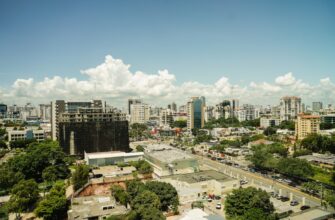- What is the Bitcoin Halving?
- Why the Halving Event Matters
- Tracking the Bitcoin Halving Countdown
- Historical Impact of Bitcoin Halvings
- How to Prepare for the Next Halving
- Frequently Asked Questions (FAQ)
- How often do Bitcoin halvings occur?
- Can the halving be canceled or changed?
- Does the halving make Bitcoin prices rise immediately?
- What happens when all Bitcoins are mined?
- Where can I track the halving countdown live?
What is the Bitcoin Halving?
The Bitcoin halving is a pre-programmed event in Bitcoin’s code that slashes the reward for mining new blocks by 50%. Occurring roughly every four years (or after 210,000 blocks), this scarcity mechanism controls Bitcoin’s inflation rate. With only 21 million coins ever to exist, halvings gradually reduce new supply until the last Bitcoin is mined around 2140. The next halving is projected for April 2024, cutting rewards from 6.25 BTC to 3.125 BTC per block.
Why the Halving Event Matters
Halvings trigger profound economic shifts in the crypto ecosystem:
- Supply Shock: Fewer new coins enter circulation, amplifying scarcity.
- Miner Economics:
- Profitability pressures force inefficient miners offline
- Hash rate volatility often follows
- Price Catalysts: Historically, halvings precede bull markets (though past performance ≠ future results)
- Network Security: Tests Bitcoin’s incentive model as fees gradually replace block rewards
Tracking the Bitcoin Halving Countdown
Monitor the countdown using these essential tools:
- Block Explorers: Sites like Blockchain.com or Blockchair show real-time block height and halving estimates
- Dedicated Countdown Timers: Platforms like BitcoinHalving.com provide live trackers with projected dates
- Mining Pools: F2Pool and ViaBTC often display halving progress on dashboards
Current Status: As of late 2023, the next halving is approximately 140,000 blocks away, with countdown clocks ticking toward April 2024.
Historical Impact of Bitcoin Halvings
Previous halvings reshaped Bitcoin’s trajectory:
| Year | Reward Before | Reward After | Price 1 Year Later |
|---|---|---|---|
| 2012 | 50 BTC | 25 BTC | +8,000% |
| 2016 | 25 BTC | 12.5 BTC | +284% |
| 2020 | 12.5 BTC | 6.25 BTC | +559% |
Note: Macro factors like regulations and adoption influenced these outcomes. Never invest based solely on halving cycles.
How to Prepare for the Next Halving
Strategic actions before the countdown ends:
- Investors: Dollar-cost average, review portfolio allocation, avoid FOMO
- Miners: Upgrade to efficient ASICs, hedge with futures, join reliable pools
- Traders: Monitor volatility indicators like the Fear & Greed Index
- All Users: Secure wallets, verify transaction fees, and stay updated
Frequently Asked Questions (FAQ)
How often do Bitcoin halvings occur?
Approximately every four years, or after 210,000 mined blocks. The interval varies slightly based on network hash rate.
Can the halving be canceled or changed?
No. Halvings are hardcoded into Bitcoin’s protocol. Altering them would require near-impossible consensus across the decentralized network.
Does the halving make Bitcoin prices rise immediately?
Not necessarily. While halvings reduce new supply, price surges typically unfold over 6-18 months as market dynamics adjust.
What happens when all Bitcoins are mined?
Miners will rely solely on transaction fees (already part of block rewards). This transition tests Bitcoin’s long-term security model.
Where can I track the halving countdown live?
Trusted sources include BitcoinHalving.com, CoinGecko’s halving page, and major blockchain explorers like Blockchain.com.








